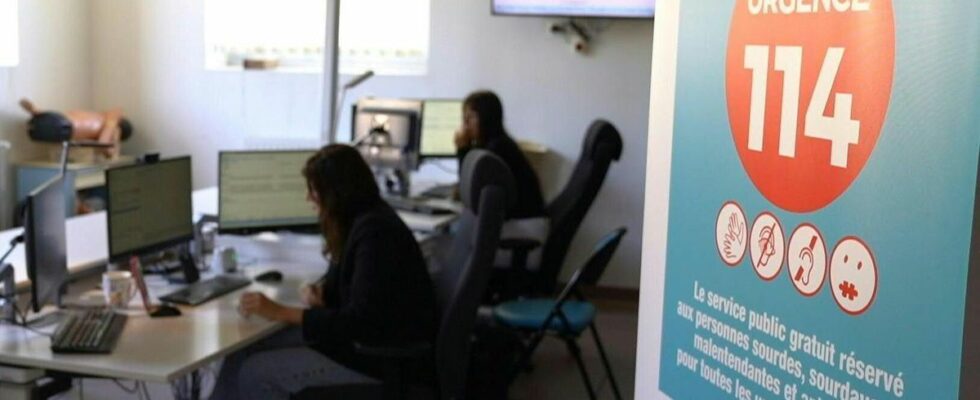Published on
updated on
Reading 2 min.
“114, am I listening?”: a man appears on Angélique’s screen and talks with her for a few minutes in sign language about his situation. He was unable to contact emergency services directly because he was unable to express himself verbally.
Angélique and a colleague, working in pairs, assess the urgency of her situation and transmit the main information to the emergency service of the department where the call comes from: depending on the case, it will be the 15th (Samu), the 17th. (emergency police) or the 18th (fire brigade) and, as with any classic request, it will be up to them to decide what action to take on the call.
To facilitate communication, “calls” can be made on different media: video, text, voice, images, by SMS, Internet and via a dedicated application, called “Emergency 114”.
Nestled in a discreet corner of the Grenoble University Hospital, the service is based on around twenty agents, some deaf and others hearing, all trained in emergency procedures (SAMU, police, gendarmerie, firefighters), in the language of signs, and this type of call taking.
Vibration and green light
They process on average 110 files per day from all over mainland France and overseas, approximately half of which relate to medical questions, a quarter are directed to the police and the remaining quarter to the firefighters.
At each request, a small device begins to vibrate in the room and emits a green light. Each at their post behind their screens, the three agents present today, one deaf and two hearing, distribute them according to the profiles of the applicants.
Six to seven million people are considered hearing impaired in France, but this covers very diverse situations: profoundly deaf (from 80,000 to 100,000 people) who favor sign language, deaf in one ear, elderly people who, on the contrary, , often do not master it.
Hence the wide range of means of communication offered to them at 114, well beyond just sign language. Deaf people and their loved ones are encouraged to fill out the application in advance to facilitate call handling.
Thanks to video, the applicant, who may be “stressed” at the time of the call, can also show what is happening behind him, “a great asset” to make people understand, for example, the extent of a disaster. , underlines Dr Véronique Equy, who has headed the service since 2022.
The agents appear on the screen and have a mannequin to show if necessary how to perform a cardiac massage, she emphasizes.
“This year, there was a couple of deaf people whose mother was giving birth: the regulatory agent guided the actions and this helped reassure this couple“, while one of her colleagues communicated in parallel with the 15 to send them an ambulance, she relates.
World Deaf Day
Little known to the general public, the National Relay Center 114, created in 2011 following the adoption of the law of February 11, 2005 known as “for equal rights and opportunities“, is unfortunately also true among its target audience, deplores Dr. Equy.
114 benefits from a tailor-made IT service for its agents and users. The use of video in particular would be enough to “make Samu jealous”, she smiles. However, “less than one person in ten” among those affected is aware of its existence.
She is counting on World Deaf Day, scheduled for this Saturday with events across France, to help her gain notoriety.
Having been deaf herself since childhood, Angéligue also welcomes the outfit of this “very important day, which allows us to highlight deaf culture“.
